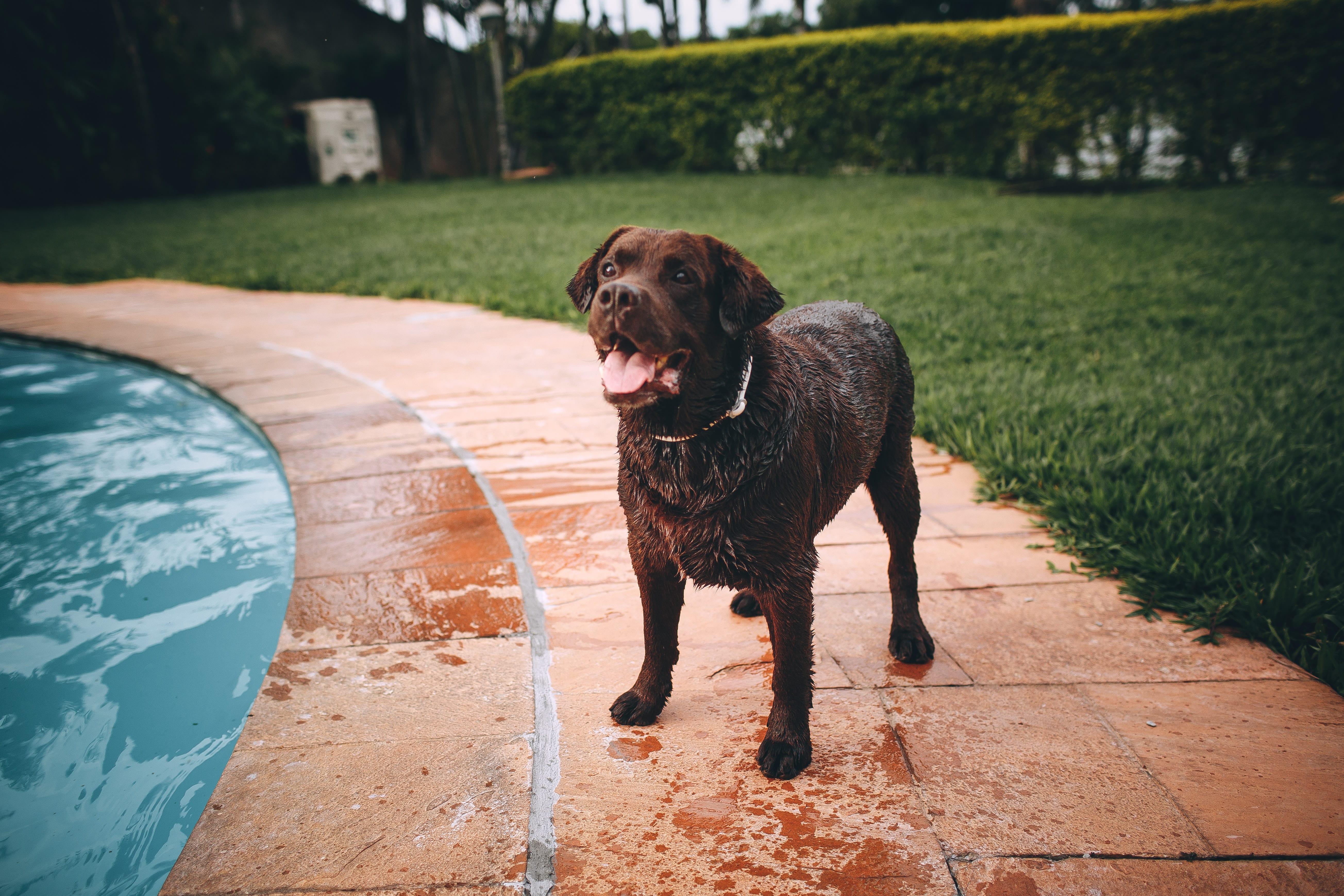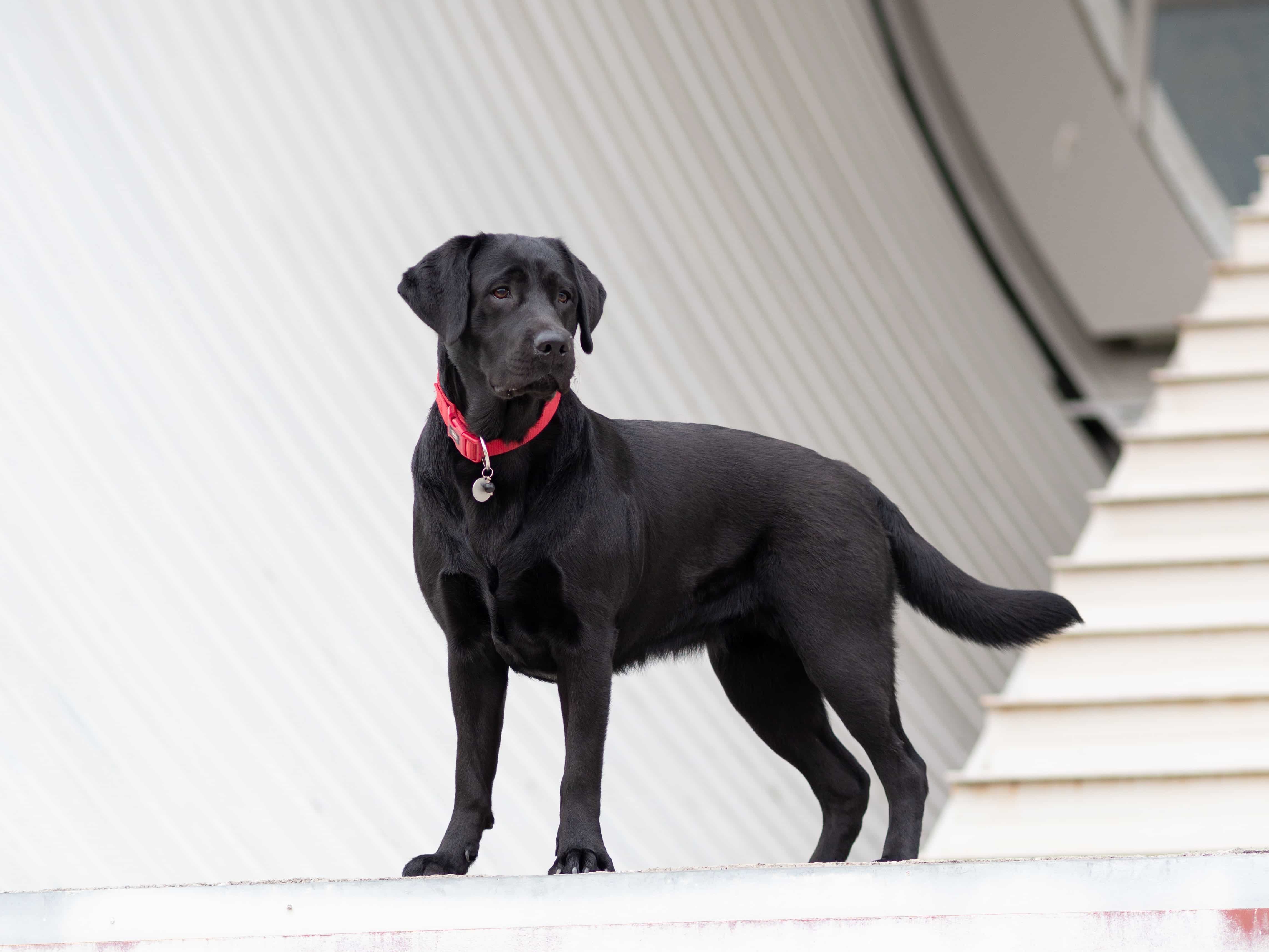
The beloved Lab must be with their family and is not a backyard dog. If they are left alone for an extended period of time, they will most likely ruin their holy reputation: a lonely, bored Lab is likely to dig, chew, or find other destructive releases for their energy.
Labs vary in their activity levels, but they always need action, both physical and mental. Daily 30-minute walks, romps at the dog park, and games of fetch are all great methods to help your Lab run off energy. A puppy, on the other hand, should not be taken on long walks and should only play for a few minutes at a time. Labrador Retrievers are prone to work exhaustion. It is up to their owner to know when they need to stop the play.
Because labs have such a fantastic reputation, some owners believe they don't require training. That is a major mistake. A hyperactive Lab puppy will quickly grow into a huge, unruly dog if not trained. Fortunately, Labs respond well to training and frequently thrive in obedience competitions.
Begin with puppy kindergarten, which teaches your puppy not just proper canine habits but also how to be comfortable with other dogs and people. Look for a class that uses positive training techniques that praise the dog for doing the right thing rather than punishing them for doing the wrong thing.
If you're parenting a Lab puppy, you'll need to take extra precautions. Prevent your Lab puppy to run and play on really hard surfaces like pavement until he or she is at least two years old and their joints have fully matured. Normal grass play is good, as is puppy agility with its one-inch hops.
The Lab, like other retrievers, is a mouthy creature that is happiest once they have something, to hold in their mouth. They're also a chewer, so have solid toys on hand at all times unless you want your sofa chewed up. When you leave home, secure your Lab in a confinement or kennel so they don't get into trouble by chewing on items they shouldn't.
Healthy Labradors normally live between the ages of 12 and 14 years. Labrador puppies are often not taken home until they are 8 weeks old.
It is a very healthy breed with few severe issues. Inherited diseases and overweight (most are lacking all or portions of the appetite-regulating (POMC-Pro-opiomelanocortin gene) are notable health and well-being difficulties.
A Royal Veterinary College research and one done by The University of Sydney showed that Chocolate Labradors had a lower average life expectancy (by around 10%) than other colors of Labradors and are more prone to suffer from various health issues.
This is assumed to be owing to breeders' efforts to expand their numbers via selective coat color selection at the sacrifice of other vital health qualities.
Brown coats are naturally unusual (in comparison to yellow and black), and they have been popular since the 1980s. This has produced a need for greater quantities.
Labradors are prone to hip and elbow dysplasia, particularly in bigger dogs. Progressive retinal atrophy, cataracts, corneal dystrophy, and retinal dysplasia are all examples of eye illnesses.
They can suffer from exercise-induced collapse, which produces heat, weakness, collapse, and disorientation after brief sessions of exercise, or obesity, which in certain cases may be attributed to a partial or complete lack of the proopiomelanocortin gene.
Hip dysplasia -in dogs is an irregular development of the hip bone that, in its more extreme condition, can ultimately cause lameness and joint arthritis. It is a polygenic (genetic) characteristic that is influenced by environmental variables. It is frequent in many dog breeds, especially bigger breeds, and is the most frequent single cause of hip arthritis.
Symptoms: lethargy,difficulty moving,back legs lameness,loss of muscle in the thighs,unusual jumps (like bunny jumps) stiffness, and pain
Elbow dysplasia- is a disorder characterized by several developmental anomalies of the dog's elbow joint, especially the formation of cartilage or the tissues around it. These anomalies, referred to as "primary lesions," cause osteoarthritic processes. Elbow dysplasia is a prevalent problem in some dog breeds.
Symptoms:limping and stiffness around the elbow area,the dog doesn't want to go on walks or play anymore,front paws pointing outwards or elbows are at a strange angle,swollen elbows
Corneal endothelial dystrophy -is an age-related condition that affects the endothelium, the inner layer of the cornea. Fluid leakage into the cornea creates edema, resulting in blue color. This will eventually affect the entire cornea. Bullous keratopathy (blisters in the cornea) can also develop, resulting in nonhealing and recurring corneal ulceration.
Symptoms:cloudiness of the eye,vision loss, sensitivity to light, putting the paws around the face, eye pain,eye ulcers
Retinal dysplasia -is an eye illness that affects the retina of animals and, in rare cases, humans. It is often a nonprogressive condition caused by viral infections, medications, vitamin A deficiency, or genetic flaws. Folds or rosettes (round clusters) of retinal tissue describe retinal dysplasia.
Symptoms:There are few visible indications of retinal dysplasia in dogs, except for a hesitation to jump from things or the appearance of being clumsy.
Your dog may collide with objects or be unable to locate items that you would anticipate him to discover, such as a ball or a toy. Reluctance to leap from a ledge. Reluctance to climb the stairs. Fear of entering dark rooms or corridors, difficulty identifying individuals or items ,color variations within the eye, behavioral modifications- Exercise-induced collapse-Most dogs with EIC have a distinct pattern of collapse that begins with hind limb weakening.They may keep walking or running while dragging their back legs.EIC collapse develops as the dog continues to move and may even worsen for a few minutes after exercise is stopped.The collapse caused by EIC is rarely unpleasant and usually resolves within 5-25 minutes of rest.A severe EIC collapse episode might be deadly.
Most dogs with EIC (more than 80%) collapse at least once before the age of three years.A few genetically altered canines never collapse, most likely because they never get the necessary amount of activity and stimulation.Activities requiring prolonged intensive exertion combined with enthusiasm or stress are the most likely to set off an attack.
Reference
https://dogtime.com/dog-breeds/labrador-retriever
https://en.wikipedia.org/wiki/Proopiomelanocortin
https://en.wikipedia.org/wiki/Labrador_Retriever
https://www.livs.org/how-to-identify-hip-dysplasia-in-dogs/
https://en.wikipedia.org/wiki/Elbow_dysplasia
https://en.wikipedia.org/wiki/Corneal_dystrophies_in_dogs
https://www.thesprucepets.com/corneal-dystrophy-in-dogs-5186412
https://en.wikipedia.org/wiki/Retinal_dysplasia
https://wagwalking.com/condition/retinal-dysplasia











